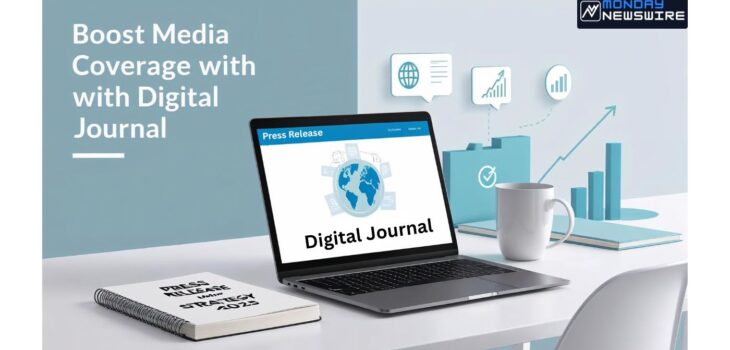 News
News
What Should You Include in a Digital Journal Press Release to Get Approved?
Publishing a press release on a reputable platform like Digital Journal can significantly boost your brand’s visibility. However, not every press release gets accepted. To ensure your Digital Journal Press Release is approved and published, it must meet specific editorial standards and offer value to readers. In this guide, we’ll walk you through the essential elements that should be included in your press release to improve your chances of approval.
Why Choose Digital Journal for Press Release Distribution?
Digital Journal is a globally recognized online news platform with a vast readership. Businesses, startups, and public relations professionals use it to share newsworthy content with targeted audiences.
Key Benefits of a Digital Journal Press Release:
- Strong online presence and domain authority
- Trusted by journalists and media outlets
- Increased visibility across search engines
- Supports multimedia content (images, videos, links)
- Effective for brand credibility and public trust
Now let’s explore what makes a Digital Journal Press Release stand out and how you can meet their approval criteria.
What Makes a Press Release Suitable for Digital Journal?
To get your press release approved, it should meet the editorial standards of Digital Journal. The content must be newsworthy, well-structured, and professionally written. Here are the main components to include:
1. A Clear and Newsworthy Headline
Your headline is the first thing reviewers and readers will see. It should be:
- Straightforward and informative
- Under 100 characters
- Free of promotional language
Avoid using excessive hype. Instead, focus on what makes the story relevant or timely.
Example:
Tech Startup Launches AI-Powered Tool to Improve Remote Team Collaboration
2. Subheadline (Optional but Effective)
A subheadline adds context to the main headline. It can elaborate on the key benefit, audience, or purpose of the announcement.
Example:
New software aims to increase productivity for distributed teams worldwide
3. Compelling Introduction Paragraph
The first paragraph should summarize the who, what, when, where, and why of your announcement. This is where journalists decide if your story is worth reading further.
Keep it concise, focused, and avoid buzzwords.
Good Example:
San Francisco-based startup NovaWorks has officially launched its new AI-driven platform designed to streamline project management for remote teams.
4. Body Content with Valuable Details
After the introduction, provide 2–3 paragraphs that go deeper into the announcement:
- Product or service features
- Key stakeholders involved
- Data or statistics (if applicable)
- Quotes from company executives
- Background on the company
Use short paragraphs and subheadings to make the content skimmable.
5. Include a Relevant and Credible Quote
A quote from a CEO, project manager, or other key individual adds credibility and a human element to your press release.
Example:
“We created this solution after seeing how difficult it was for remote teams to stay aligned,” said Sarah Lee, CEO of NovaWorks.
Avoid overly promotional quotes. Stick to facts and professional tone.
6. Multimedia Enhancements (Images, Videos, Logos)
Digital Journal allows the inclusion of:
- High-quality images (company logo, product shots)
- Videos (product demos, event footage)
- Infographics or charts (for data-driven releases)
Visual content makes your press release more engaging and increases chances of approval.
7. Company Boilerplate (About Section)
End your press release with a short paragraph about your company. This should include:
- Company name
- Year established
- Core mission or services
- Website link
Example:
About NovaWorks:
Founded in 2021, NovaWorks is a technology company that builds productivity tools for modern teams. Learn more at www.novaworks.com.
8. Contact Information
Always include contact details so journalists or readers can reach out if needed. This should contain:
- Full name of the PR contact
- Email address
- Phone number (optional)
- Company website
Best Practices for Digital Journal Press Release Approval
Beyond including the right content, following best practices improves your chances of getting published.
Use Proper Formatting
- Use bold for headings
- Avoid excessive capitalization or symbols
- Stick to 400–800 words
- Use grammar-checked, professional English
Avoid Promotional Language
Digital Journal is a news platform, not an advertisement hub. Avoid language like:
- “The best in the market”
- “Buy now!”
- “Revolutionary and unmatched”
Instead, focus on informative and factual content.
Ensure Relevance and Timeliness
Make sure your press release is relevant to current trends or important events. Outdated or vague announcements are more likely to be rejected.
Common Reasons Why Digital Journal Press Releases Get Rejected
Understanding what to avoid is just as important. Some common rejection reasons include:
- Lack of news value
- Overly promotional tone
- Poor grammar or formatting
- No supporting media
- Missing contact details
Conclusion
Submitting a press release to Digital Journal is an effective way to gain online visibility, build trust, and reach your target audience. However, to get your Digital Journal Press Release approved, it must follow strict editorial standards. By focusing on structure, value, and professionalism, your content will have a much higher chance of being published.
Always ensure that your story is newsworthy, well-written, and includes all the essential elements like a strong headline, body content, quotes, media, and contact details. With these best practices in mind, your next press release can successfully make it to Digital Journal’s front page.









